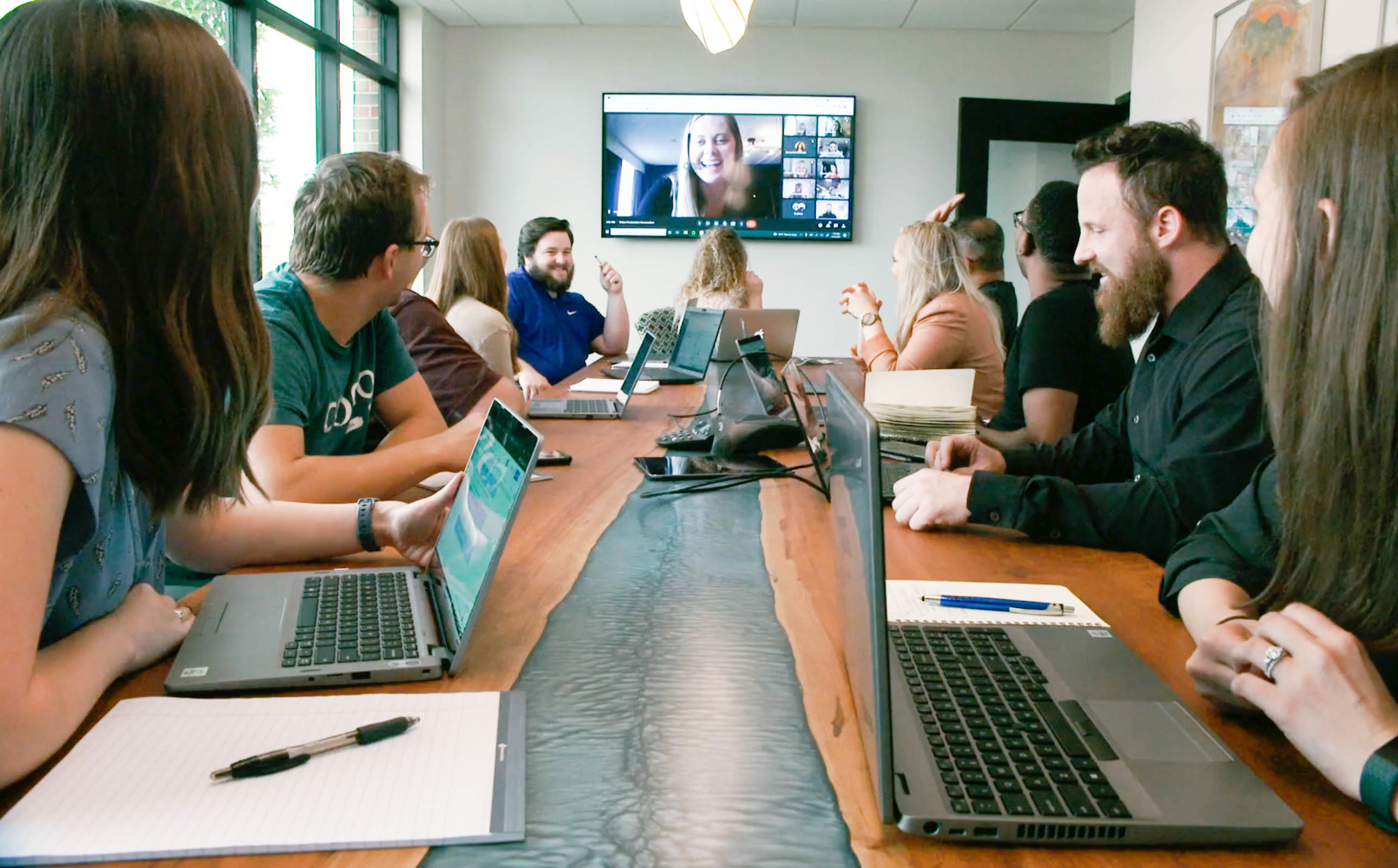The digital marketing revolution has fundamentally transformed how B2B companies connect with their audiences. Modern business buyers now conduct research, evaluate vendors, and make purchasing decisions primarily through digital channels rather than traditional sales processes.
This shift presents both opportunities and challenges for B2B marketers. Success requires adapting your approach to reach buyers where they spend their time while navigating evolving privacy regulations and measurement complexities.
B2B digital marketing strategy encompasses more than simply moving traditional tactics online. It demands understanding how decision-makers consume content, which channels drive genuine engagement, and how to measure success across complex buying cycles that often involve multiple stakeholders.
The Digital-First B2B Marketplace Reality
B2B digital advertising spending continues to grow rapidly while traditional advertising spend remains below pre-pandemic levels. This trend reflects a permanent shift in buyer behavior rather than a temporary adjustment.
Three strategic shifts can significantly impact your B2B digital marketing performance:
Follow proven B2C strategies. Leading consumer brands successfully diversify their marketing mix to create comprehensive omnichannel approaches. This strategy works equally well for reaching business buyers across multiple touchpoints and personalizing content throughout their research process.
Lead with data-driven insights. Use your CRM data to identify customers with the highest lifetime value based on actual spending patterns and growth potential. Create AI-powered lookalike models to discover new prospects who exhibit similar characteristics and behaviors to your best existing customers.
Embrace video content across the funnel. B2B buyers engage heavily with video content throughout their decision-making process. Product demonstrations, educational tutorials, webinars, and company culture content all play crucial roles in building trust and communicating complex value propositions.
Strategic B2B Digital Marketing Channel Selection
Effective B2B digital marketing requires presence across channels where your target audience actively engages with business-related content.
LinkedIn advertising provides unmatched access to professional audiences with detailed targeting capabilities. The platform’s business-focused environment creates higher engagement rates for B2B content compared to general social networks.
Connected TV enables B2B brands to leverage video storytelling for awareness building. CTV advertisements reach decision-makers on premium content across their home’s largest screen, with advanced targeting capabilities that rival digital display advertising.
Programmatic display offers precise audience targeting and retargeting capabilities across thousands of websites and applications, in addition to rich contextual targeting opportunities for lead generation when individuals are in a research and buying mindset.
Paid search remains critical for capturing high-intent prospects actively researching solutions. Combining organic and paid search strategies maximizes visibility during crucial research phases when buyers evaluate potential vendors.
Digital audio and podcast advertising represents an emerging opportunity with less competitive noise and growing B2B audience engagement. Early adoption can provide competitive advantages before widespread market adoption increases costs.
Advanced B2B Targeting Strategies
The cookieless future significantly impacts B2B targeting capabilities, particularly for reaching niche professional audiences. Successful strategies balance first-party data utilization with emerging identity solutions and third-party prospecting methods.
Account-based targeting enables precise engagement with specific companies and decision-makers within those organizations. Use IP targeting to reach employees at work, geographic targeting around industry events, and firmographic data to identify ideal prospect companies.
Intent-based targeting leverages behavioral signals that indicate active research or purchasing consideration. This approach identifies prospects earlier in their buying journey when your messaging can have greater influence on vendor selection.
Lookalike modeling expands reach by identifying prospects who share characteristics with your best existing customers. AI-powered modeling improves accuracy and scales personalization across larger audience segments.
Measuring B2B Digital Marketing Performance
Traditional attribution models fail to capture the complexity of B2B buying cycles, which often involve multiple decision-makers, extended research periods, and various touchpoints across sales and marketing channels.
A comprehensive measurement approach requires five essential steps:
Align sales and marketing teams around shared objectives and measurement standards. Both teams must understand how their activities contribute to overall business outcomes and revenue generation.
Define clear business outcomes beyond marketing metrics. Focus on revenue impact, customer lifetime value, and business growth rather than solely tracking clicks, impressions, or lead volume.
Identify success indicators that connect marketing activities to business results. Move beyond standard efficiency metrics to measure genuine impact on sales pipeline and revenue generation.
Evaluate incrementality through controlled testing rather than relying on last-click attribution. Test individual channels and tactics against established baselines to understand true performance impact.
Implement continuous optimization based on performance insights. Create learning agendas that identify key questions for improving future campaign performance and business outcomes.
Account-Based Marketing in B2B
Digital channels now receive the majority of account-based marketing investment, with social media, paid search, and email leading spending allocation. However, display advertising, connected TV, and audio channels continue gaining budget share annually.
The primary challenge in ABM execution remains delivering personalized experiences at scale. AI-powered segmentation and programmatic advertising technology address this challenge by automating account-specific creative delivery and optimization.
Successful digital ABM combines precise targeting with compelling creative messaging tailored to specific account needs and industry challenges. This approach generates higher engagement rates and conversion performance compared to broad-based marketing campaigns.
Future-Proofing Your Strategy
B2B digital marketing success requires staying ahead of technological changes while maintaining focus on fundamental buyer needs and business objectives. Privacy regulation evolution, targeting capability changes, and measurement complexity will continue challenging marketers.
The most successful B2B digital marketing strategies emphasize agility, data-driven decision making, and cross-channel integration. Focus on building first-party data assets, testing emerging channels and technologies, and maintaining measurement frameworks that connect marketing activities to business results.
Your buyers have already shifted to digital-first research and purchasing processes. The question isn’t whether to embrace B2B digital marketing, but how quickly you can optimize your approach to match evolving buyer expectations while driving measurable business growth.






